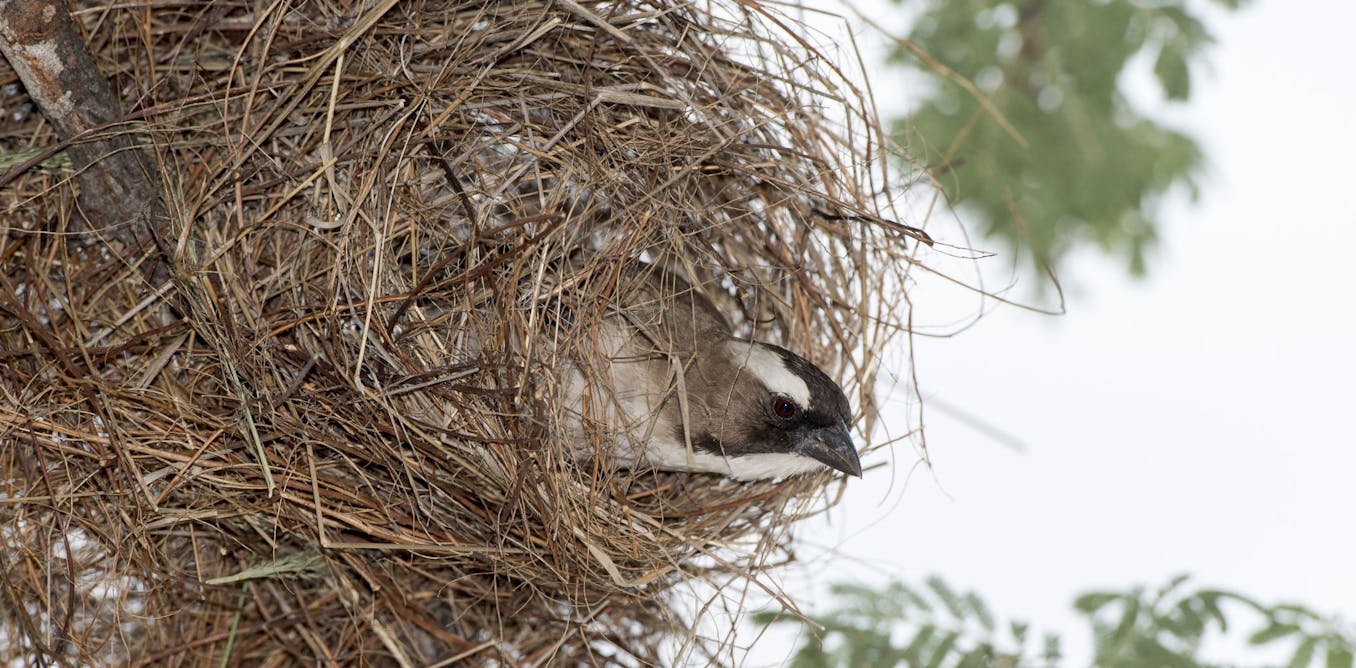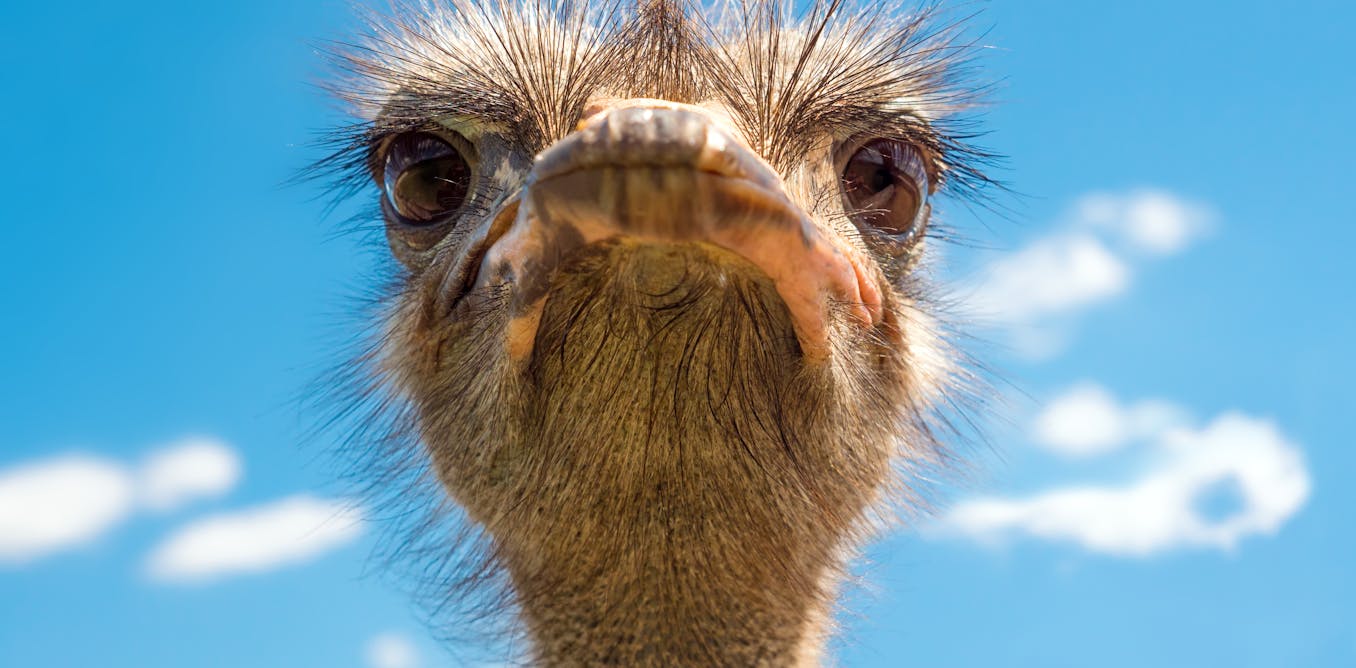Tswalu Kalahari Reserve is a protected nature reserve at the southern edge of the Kalahari desert in South Africa’s Northern Cape province. It’s an arid area with high daytime temperatures and unpredictable rainfall.
One of the species that lives in this harsh environment is the white-browed sparrow-weaver (Plocepasser mahali). They live here in social groups of up to 12 birds. Group members stay in the same group for many years at a time.
Within each social group, only one pair of birds breeds: the dominant male and female (which lays one to three eggs per breeding attempt). Other group members – usually offspring of the breeding pair – engage in a number of helping behaviours, from defending the territory to feeding the nestlings of the dominant pair.
This is not the only species in which the breeding pair has help raising the young. Southern pied babblers and sociable weavers are other examples in the Kalahari. This type of behaviour, known as cooperative breeding, occurs globally and seems to be particularly associated with arid habitats. However, it’s still not clear what benefits it offers and how it aids species to adapt to the environment.
Read more:
Birds evolve different body temperatures in different climates – new study of 53 African species
In a long-term study recently published in the journal PLOS Biology, covering 10 years of research (from 2007 to 2016) at the Tswalu Kalahari Reserve, my University of Exeter research colleagues and I added some evidence to help answer this question. Our study revealed that white-browed sparrow-weaver mothers lay larger eggs when they have help with nestling care. Egg size is an important trait which affects nestling survival.
This is the first formal evidence in birds that maternal investment in eggs changes with the availability of help. The results also counter the idea previously proposed that with more help, mothers would lay smaller eggs.
Understanding correlations
Previous studies of cooperatively breeding birds have tended to find a correlation between having more helpers and laying smaller eggs. However, it was unclear whether this correlation arose from mothers changing their egg size according to the social conditions they experienced (known as “plasticity”), or if other confounding factors could be explaining the results.
By using a number of statistical tools, we could investigate whether individual white-browed sparrow-weaver mothers laid larger or smaller eggs depending on their social conditions. The number of helpers during the post-natal phase is strongly correlated with the number of helpers when mothers laid eggs. So mothers should have reliable information to adjust egg size based on the availability of help with post-natal care. We found that mothers laid larger eggs in the presence of (female) helpers and they also reduced their feeding rates to the offspring.
In white-browed sparrow-weavers, female helpers provide significantly more post-natal care than male helpers. The fact that the number of female helpers (and not male helpers) positively predicted egg size suggests the availability of cooperative care (and not simply the presence of helpers) as the causal mechanism of our results.
These findings indicate it is possible that having help allows mothers to invest more into pre-natal (egg) development of her offspring, to which helpers cannot contribute directly.
Helpers and benefits to offspring
It is possible that the lightening of maternal post-natal investment (feeding of nestlings) allows the mother bird to invest more resources into bigger eggs, which are then more likely to hatch into nestlings that survive into adulthood.
Through positive helper effects on pre-natal maternal investment, helper assistance with the post-natal care of breeders’ young in cooperative species (including our own) may thus have hitherto unknown benefits to offspring.

The post “Kalahari weaver birds lay bigger eggs when they have female helpers to feed nestlings” by Pablo Capilla-Lasheras, Research Associate in ecology, evolution and behaviour, University of Glasgow was published on 02/22/2024 by theconversation.com
































